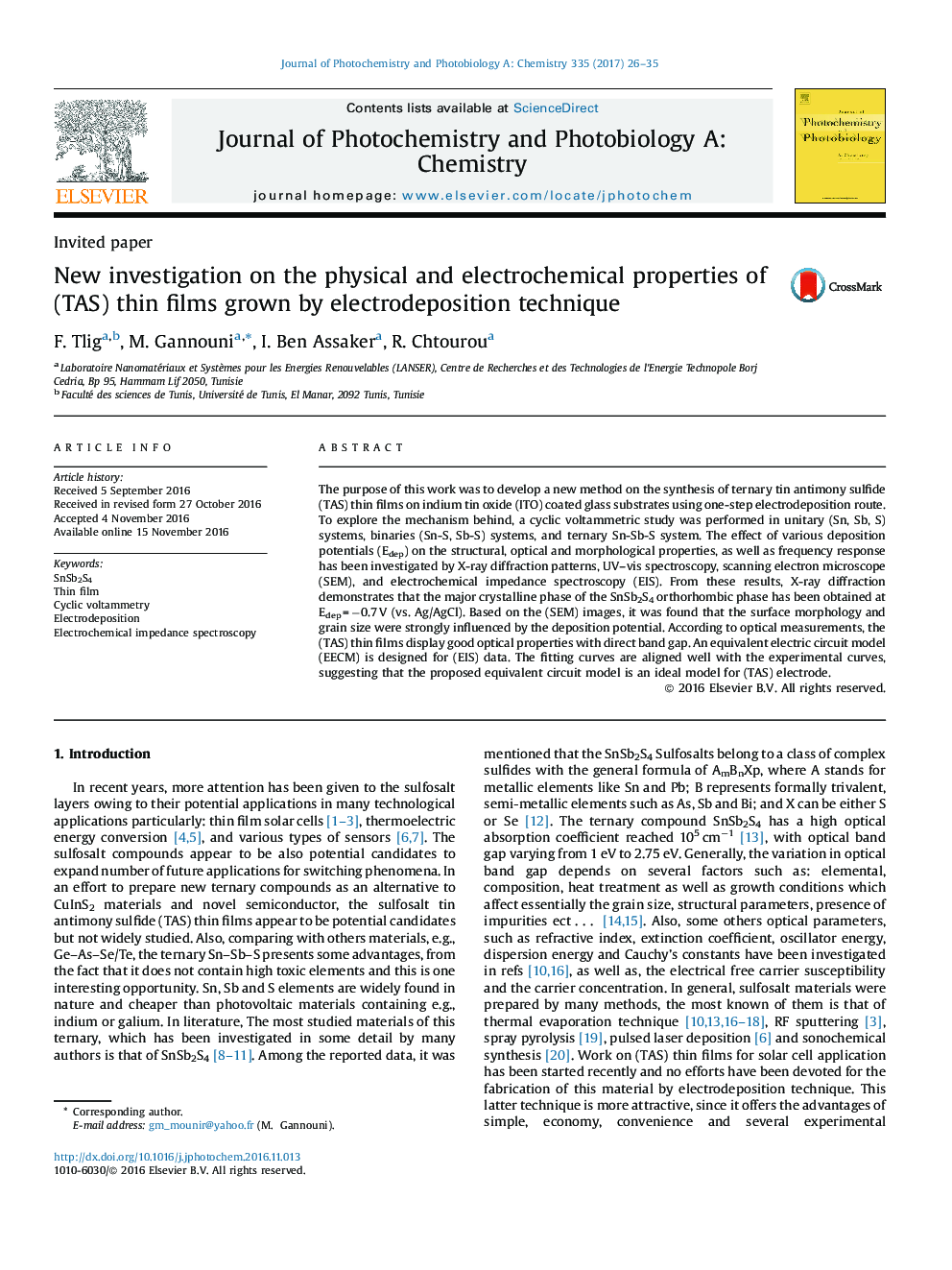| Article ID | Journal | Published Year | Pages | File Type |
|---|---|---|---|---|
| 4754112 | Journal of Photochemistry and Photobiology A: Chemistry | 2017 | 10 Pages |
â¢(TAS) thin films were potentiostatically deposited by a novel approach.â¢(EIS) data and (EECM) were altered by varying the deposition potential.â¢(TAS) thin films semiconductors are a promising materials for solar energy conversion applications (solar or photoelectrochemical cells).
The purpose of this work was to develop a new method on the synthesis of ternary tin antimony sulfide (TAS) thin films on indium tin oxide (ITO) coated glass substrates using one-step electrodeposition route. To explore the mechanism behind, a cyclic voltammetric study was performed in unitary (Sn, Sb, S) systems, binaries (Sn-S, Sb-S) systems, and ternary Sn-Sb-S system. The effect of various deposition potentials (Edep) on the structural, optical and morphological properties, as well as frequency response has been investigated by X-ray diffraction patterns, UV-vis spectroscopy, scanning electron microscope (SEM), and electrochemical impedance spectroscopy (EIS). From these results, X-ray diffraction demonstrates that the major crystalline phase of the SnSb2S4 orthorhombic phase has been obtained at Edep = â0.7 V (vs. Ag/AgCl). Based on the (SEM) images, it was found that the surface morphology and grain size were strongly influenced by the deposition potential. According to optical measurements, the (TAS) thin films display good optical properties with direct band gap. An equivalent electric circuit model (EECM) is designed for (EIS) data. The fitting curves are aligned well with the experimental curves, suggesting that the proposed equivalent circuit model is an ideal model for (TAS) electrode.
Graphical abstractDownload high-res image (130KB)Download full-size image
